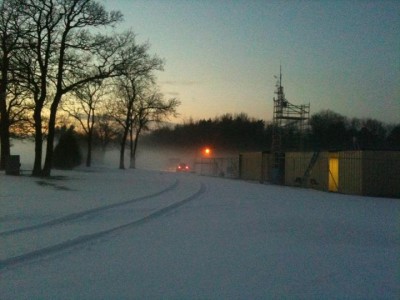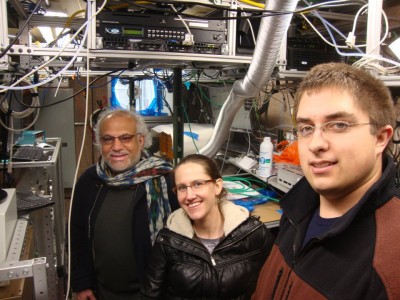ASR-funded research discovers surprising sources of heat in the atmosphere

Smoke is composed largely of organic carbon that is believed to scatter sunlight and exert a cooling effect, as well as black carbon that is known to absorb sunlight and contribute to warming.
“But we have shown that black carbon, when coated with organic carbon becomes a more potent solar absorption agent to warm the climate and also that brown carbon, an organic carbon, is an important absorber of sunlight,” said Manvendra Dubey of Los Alamos National Laboratory (LANL), project leader of the study funded by the Atmospheric Science Research (ASR) Program.
Creating the Perfect Storm
The field study, which was based near London, tracked an urban plume from the city as it moved across Europe. In this region, diesel is used for transportation and burning of biomass is the main form of home heating in winter. Emissions from the two fuel sources create a unique environment that allows for the coatings and the brown carbon both to occur, Dubey said.
Heating fuels emit organic species that can coat the black carbon—or soot—particles produced by diesel combustion, and the coating creates a lens effect, which focuses the absorbed sunlight and increases warming. “The beauty of our experiment was that we had state-of-the-art tools that allowed us to measure the coatings of these particles in unprecedented detail,” Dubey said.
Scientists found the coatings became thicker as the emissions from the diesel aged in the atmosphere. Understanding this effect and its dynamic nature is key to creating more accurate climate models, Dubey said.

Both the coating on black carbon and the existence of brown carbon will occur wherever there is a mixture of wood burning and diesel combustion, in countries such as India or Brazil for example, Dubey said. In contrast, enhanced light absorption will not occur where solid wood combustion is not pervasive, explaining why previous studies had not found similar results in regions of the United States or Canada, where electricity is the main heat source in most urban areas.
From Local to Global
These findings indicate that previous climate models could have misrepresented smoke’s warming effect because the models were not factoring in the regional variability of the enhanced warming that occurs in certain regions, but not in other areas.
“Our data shows that there are large regional differences in how aerosols warm the atmosphere and climate models will need to take this into consideration,” said Allison Aiken, a LANL research scientist and second author on the study. “And the warming due to brown carbon is another new phenomenon that needs to be incorporated in these models.”
In order to provide the necessary information for climate models, more regional field-based studies are needed to investigate where, and when, enhanced warming takes place. “It is important to get the unique warming signature for the fuel mix that is specific to a region,” Aiken said.
Such studies will not only lead to more accurate capturing of the effects of aerosols on warming, but will also be necessary to inform policies at both a regional, and a global, level.
“Now that we know that black carbon and brown carbon have a warming effect, to control these emissions would both improve air quality and help slow climate warming immediately,” Dubey said. “It would be a win-win.”
For more information, read the LANL press release.
Reference: Liu S, AC Aiken, K Gorkowski, MK Dubey, CD Cappa, LR Williams, SC Herndon, P Massoli, EC Fortner, PS Chhabra, WA Brooks, TB Onasch, JT Jayne, DR Worsnop, S China, N Sharma, C Mazzoleni, L Xu, NL Ng, D Liu, JD Allan, JD Lee, ZL Fleming, C Mohr, P Zotter, S Szidat, and ASH Prévôt. 2015. “Enhanced light absorption by mixed source black and brown carbon particles in UK winter.” Nature Communications, 6, 8435, doi:10.1038/ncomms9435.
This work was supported by the U.S. Department of Energy’s Office of Science, through the Biological and Environmental Research program as part of the Atmospheric System Research program.

